Posts Tagged: Lynn Kimsey
Flies, Maggots and Forensic Entomologists at Bohart Museum on Sunday, July 9
Do you know the importance of maggots? Have you ever wanted to talk to a forensic entomologist? Ever wanted to create "maggot art" in a family...
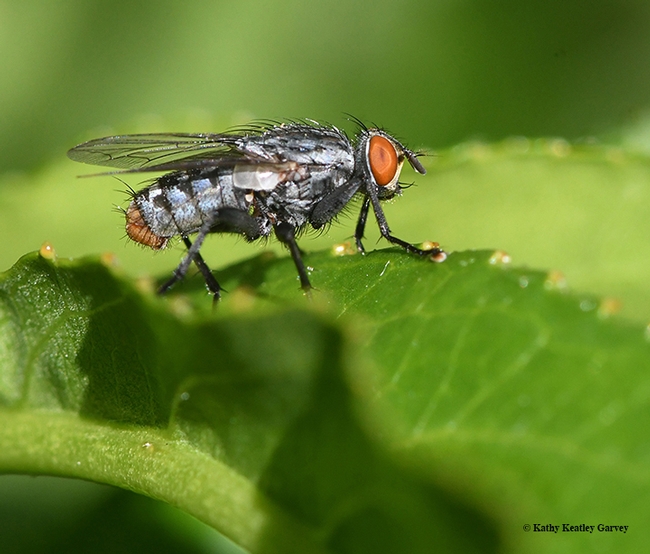
A male flesh fly (Sarcophagidae) "very likely genus Sarcophaga," according to senior insect biosystematist Martin Hauser of of the Plant Pest Diagnostics Branch, California Department of Food and Agriculture. Photo taken on a nectarine plant in Vacaville, Calif. (Photo by Kathy Keatley Garvey)
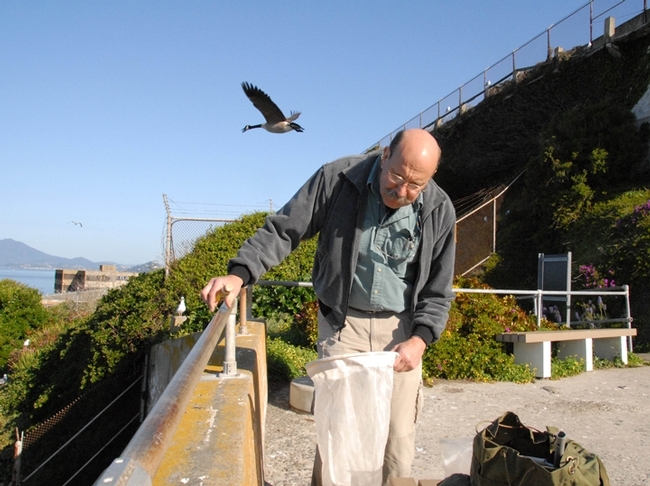
UC Davis forensic entomologist Robert Kimsey collecting flies on Alcatraz Island for a research project. (Photo by Kathy Keatley Garvey)
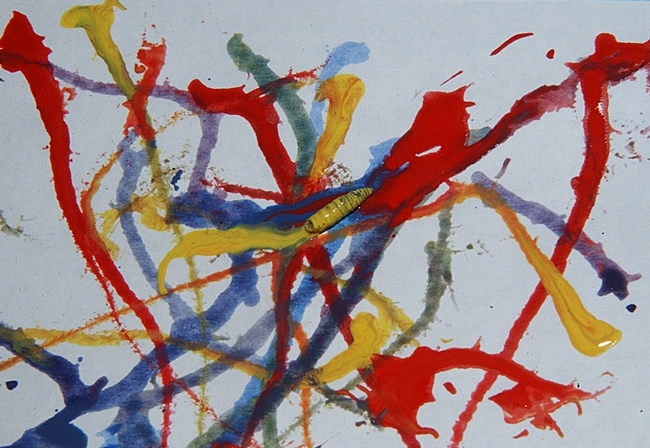
Maggot art is created by dipping a maggot in non-toxic, water-based paint and letting it crawl on canvas (paper). This is a popular activity at the campuswide UC Davis Picnic Day. (Photo by Kathy Keatley Garvey)
Best Sentence Collection: Stings Happen When Bees Are 'Aminated and Antagonistic'
"Killer bees can pursue people for more than a quarter mile when they are animated and antagonistic and die once they sting since the stingers are...
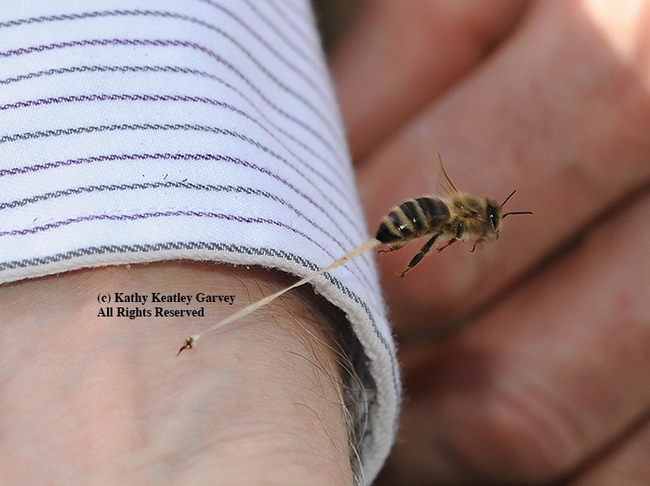
An unusual image of a honey bee sting. Note the stinger embedded in the wrist and the honey bee pulling away, its abdominal tissue trailing. (Photo by Kathy Keatley Garvey)
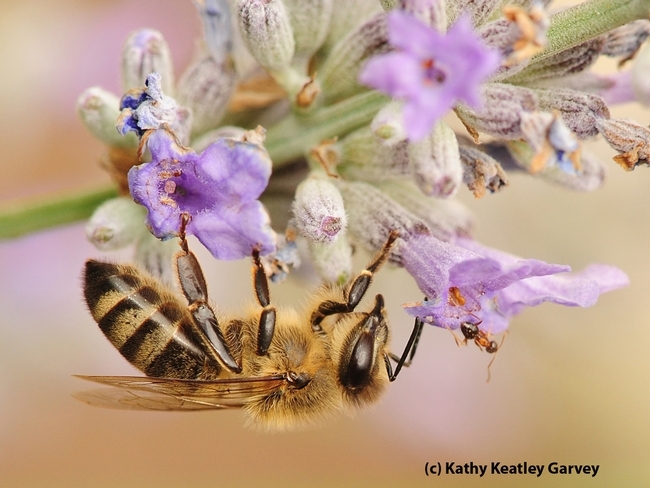
A honey bee encounters a velvetry tree ant. They are foraging on lavender. (Photo by Kathy Keatley Garvey)
The Lady Beetle and the Syrphid Fly
So, here I am, an Asian lady beetle (Harmonia axyridis) perched on a rose bush in Vacaville, Calif., as dawn breaks. I'm eating aphids and...
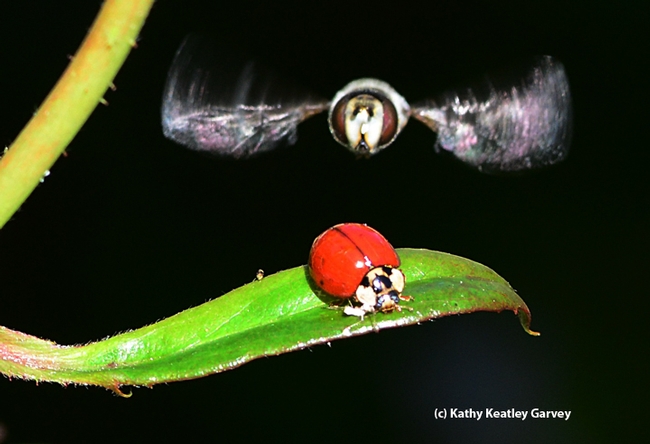
A large syrphid fly, Scaeva pyrastri (as identified by Martin Hauser of the California Department of Food and Agriculture), heads for a lady beetle. (Photo by Kathy Keatley Garvey)
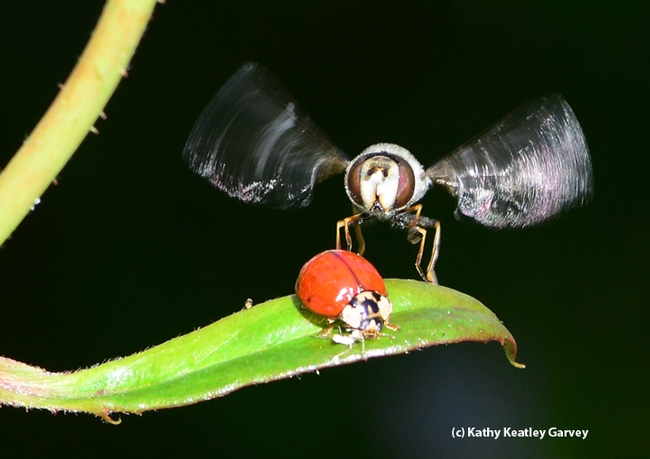
Touchdown! The large syrphid fly, Scaeva pyrastri, lands next to the lady beetle.(Photo by Kathy Keatley Garvey)
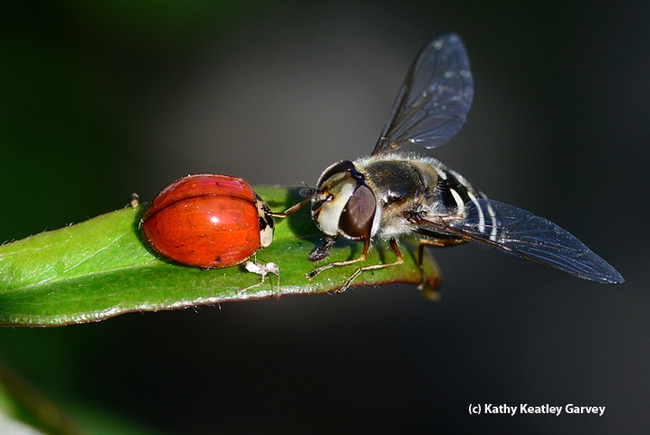
The syrphid fly licks honeydew from the lady beetle. (Photo by Kathy Keatley Garvey)
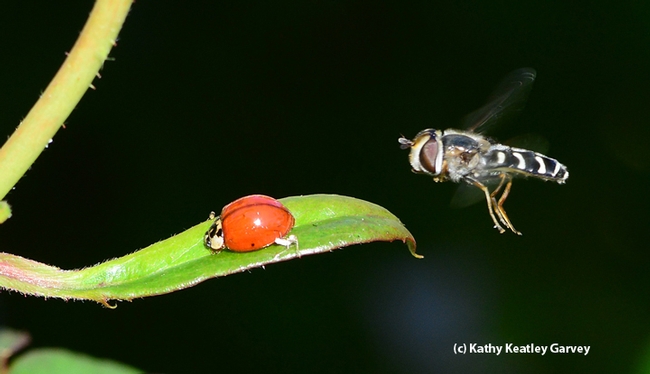
Honeydew is a sugar-rich sticky liquid, secreted by aphids and some scale insects as they feed on plant sap. When their mouthpart penetrates the phloem, the sugary, high-pressure liquid is forced out of the anus of the aphid.
The Beauty of a Carpenter Bee's Wings
There's an old saying applicable to child-rearing: "First you give them roots, and then you give them wings." Roots. Wings. Roots to ground them,...
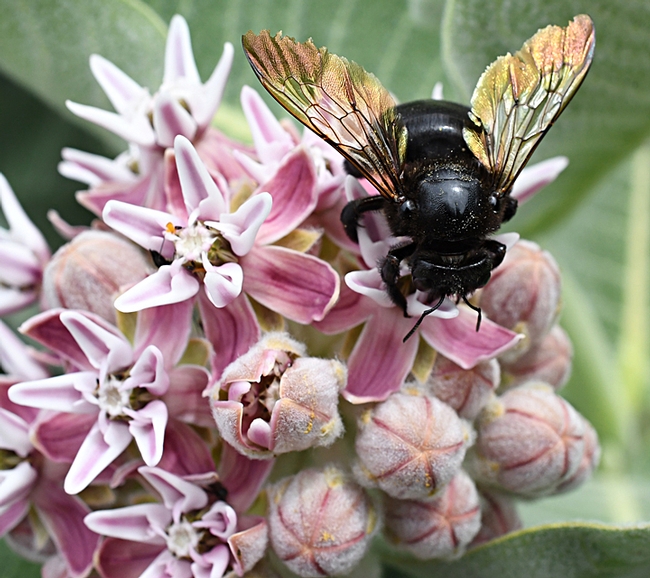
Iridescent wings of a female Valley carpenter bee, Xylocopa varipuncta. The bee is nectaring on showy milkweed, Asclepias speciosa, but she's the one putting on a show. (Photo by Kathy Keatley Garvey)
State's Proposed Permit Rules for Insect-Collecting: Onerous, Obtrusive, Obstructive
When UC Regents scholar Heather Wilson, a junior specialist in the Frank Zalom lab, UC Davis Department of Entomology and Nematology, entered the...
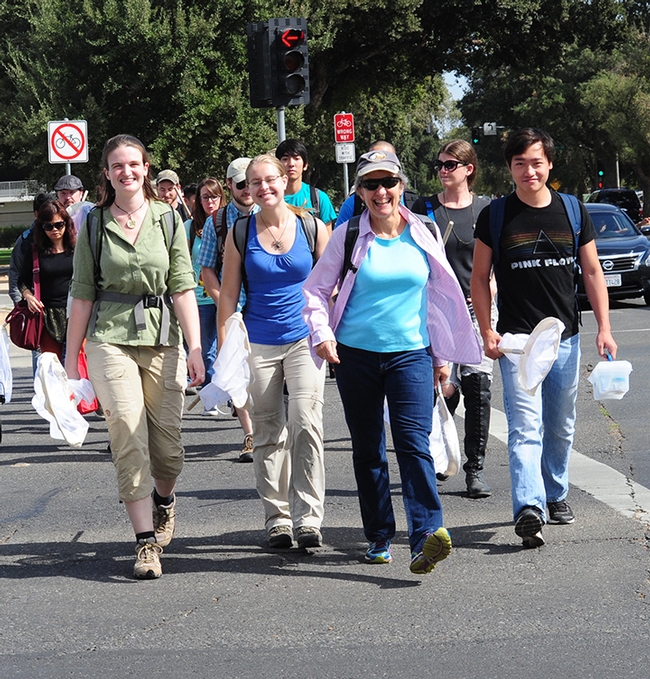
Lynn Kimsey (third from left), director of the Bohart Museum of Entomology and professor of entomology at UC Davis, leading a field trip to collect insects on the Student Farm. (Photo by Kathy Keatley Garvey)

